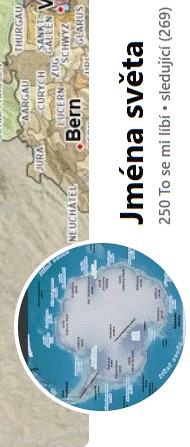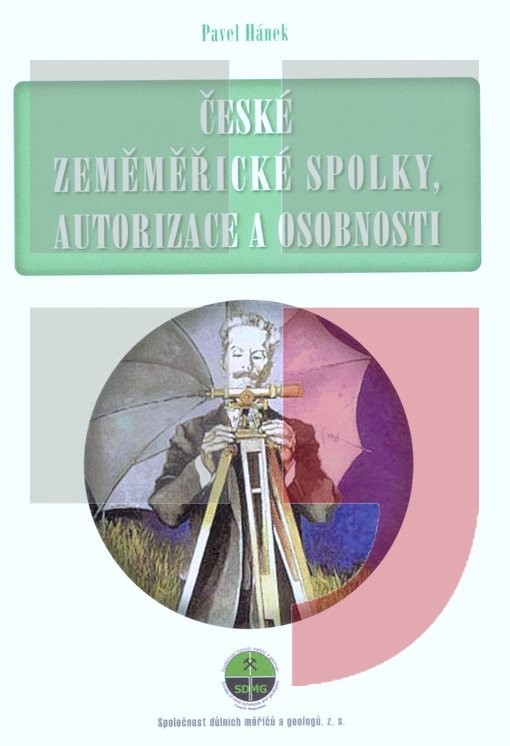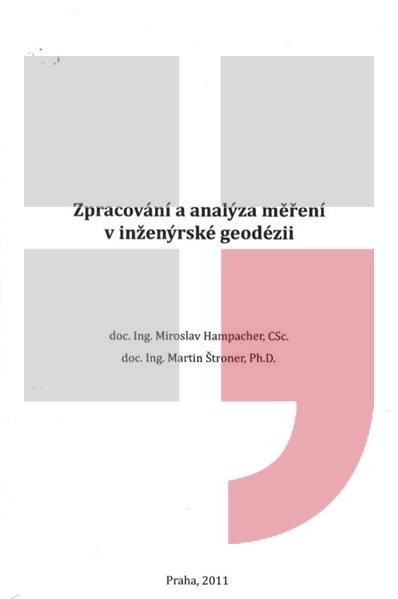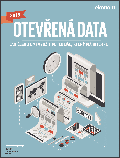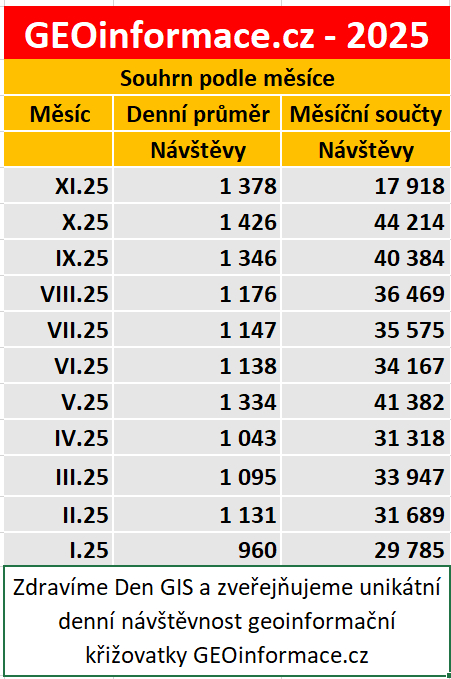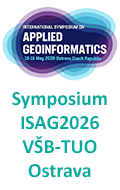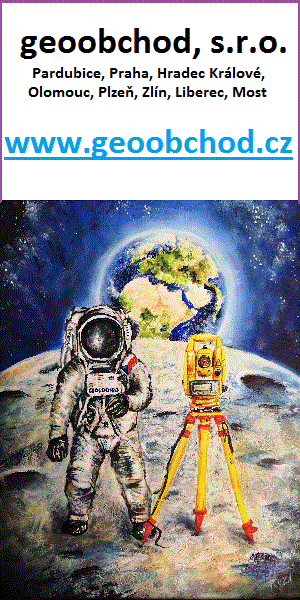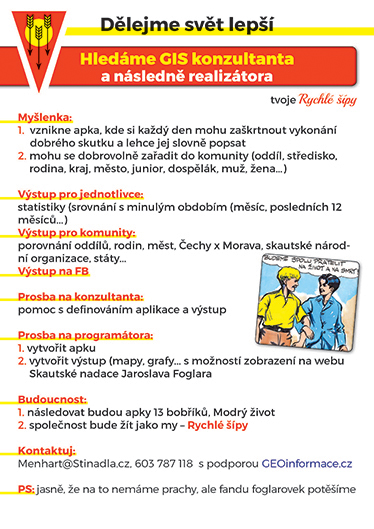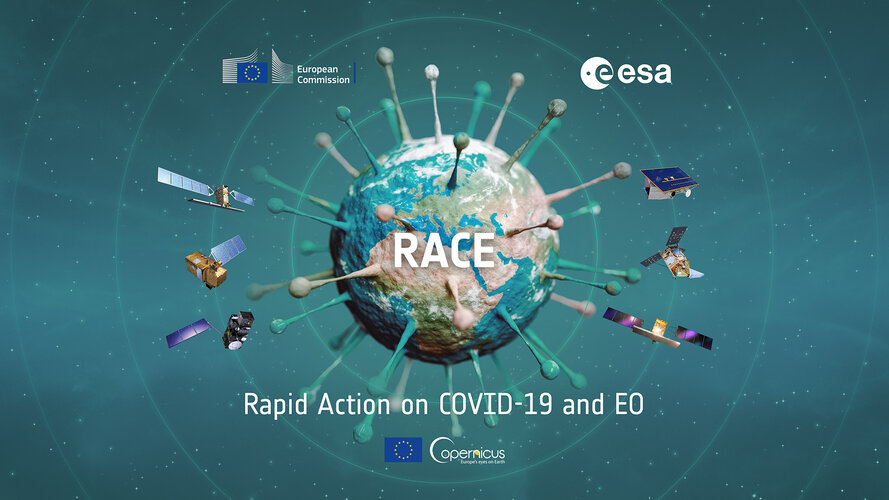ESA Observing the Earth 
zdroje zpráv:
Harnessing artificial intelligence for climate science
18.9.2019 13:55
Over 700 Earth observation satellites are orbiting our planet, transmitting hundreds of terabytes of data to downlink stations every day. Processing and extracting useful information is a huge data challenge, with volumes rising quasi-exponentially.
Using a data cube to assess changes in the Earth system
16.9.2019 14:50
Researchers all over the world have a wealth of satellite data at their fingertips to understand global change, but turning a multitude of different data into actual information can pose a challenge. Using examples of Arctic greening and drought, scientists at ESA’s ɸ-week showed how the Earth System Data Lab is making this task much easier.
First day of camp
16.9.2019 12:22
This week, 24 app developers are at ESA’s site in Italy for the Space App Camp, where they will be creating mobile applications using satellite data
ɸ-week highlights
13.9.2019 16:20
As ESA’s second ɸ-week has drawn to a close, let’s take a look at some of the highlights
ɸ-week highlights
13.9.2019 16:20
As ESA’s second ɸ-week has drawn to a close, let’s take a look at some of the highlights
Relive ɸ-week
13.9.2019 12:15
Replay the livestream of ESA’s ɸ-week, which explored how open science and innovation can benefit from the latest digital technologies to shape the future of Earth observation
Winning bootcamp ideas at Φ-week
13.9.2019 11:15
On the sidelines of ESA’s Φ-week, a five-day app-development bootcamp took place where young developers came together to solve big industry challenges using Earth observation data. The teams developed app prototypes, which were tested by a set of users. Those with the best commercial potential were awarded with prizes.
Earth from Space
13.9.2019 10:05
In this week's edition, explore Baja California in northern Mexico with Copernicus Sentinel-1
Baja California
13.9.2019 10:05
Earth observation image of the week: Copernicus Sentinel-1 takes us over Baja California, in northern Mexico
First Earth observation satellite with AI ready for launch
12.9.2019 11:12
A few months from now will see the launch of the first European satellite to demonstrate how onboard artificial intelligence can improve the efficiency of sending Earth observation data back to Earth. Dubbed ɸ-Sat, or PhiSat, this revolutionary artificial intelligence technology will fly on one of the two CubeSats that make up the FSSCat mission – a Copernicus Masters winning idea.
Tracing the environmental impacts of supply chains
11.9.2019 15:15
Globalisation and international trade allow us to consume produce from all over the world. But this comes at a cost to the environment – but, for the first time, satellite data combined with artificial intelligence is being usedtoprovide information to assess the impact of global supply chains.
Using machine learning for rewilding
10.9.2019 18:25
There may not be an obvious connection between rewilding and machine learning, but as highlighted today at ESA’s ɸ-week, a project in the Netherlands uses satellite data and new digital technology to understand how a nature reserve responds to the pressure of being grazed by herbivores.
Using artificial intelligence to automate sea-ice charting
10.9.2019 16:34
Reliable maps of sea-ice conditions and forecasts are of vital importance for maritime safety, safe navigation and planning. The continued retreating and thinning of Arctic sea ice calls for a more effective way of producing detailed and timely ice information – which is where artificial intelligence comes in.
Using artificial intelligence to automate sea-ice charting
10.9.2019 16:34
Reliable maps of sea-ice conditions and forecasts are of vital importance for maritime safety, safe navigation and planning. The continued retreating and thinning of Arctic sea ice calls for a more effective way of producing detailed and timely ice information – which is where artificial intelligence comes in.
Australian bushfires
10.9.2019 12:00
The Copernicus Sentinel-2 mission captures the multiple blazes that have broken out in northern New South Wales, Australia
ESA’s ɸ-week 2019 opens with a flourish
9.9.2019 18:42
Following the success of last year’s ɸ-week, this year’s event promises to be even more exciting. With the conference room packed to the gunwales, ɸ-week 2019 kicked off this afternoon at ESA’s centre of Earth observation in Italy with a series of stimulating talks, lively debate and an announcement of a new initiative.
ESA and ɸ
9.9.2019 18:35
As this week’s ɸ-week kicks off, ESA’s Josef Aschbacher reflects on progress made so far and looks to the future of Earth observation and the digital revolution
AI for space
9.9.2019 18:14
ESA’s Josef Aschbacher and CLAIRE’s Holger Hoos introduce us the world’s first AI Special Interest Group dedicated to space
Monitoring air pollution from fires
9.9.2019 11:35
The wildfires that have been devastating the Amazon rainforest have been international headline news over the last weeks. These fires are not only an environmental tragedy in terms of lost forest and biodiversity, but they are also leaving their mark on the atmosphere, affecting air quality and, potentially, the global climate.
Castelli Romani
6.9.2019 10:05
Earth observation image of the week: Copernicus Sentinel-2 takes us over the Castelli Romani, a volcanic area just outside of Rome in Italy
Earth from Space
6.9.2019 10:05
In this edition, explore the Castelli Romani area near Rome with Copernicus Sentinel-2
Fellowship Call
5.9.2019 16:50
To support postdocs initiate a scientific career in Earth observation and Earth system science, ESA’s Living Planet Fellowship Call is open. Apply before 1 November 2019
Fellowship Call
5.9.2019 16:50
To support postdocs initiate a scientific career in Earth observation and Earth system science, ESA’s Living Planet Fellowship Call is open. Apply before 1 November 2019
ɸ-week live
5.9.2019 14:05
ESA’s ɸ-week on 9–13 September explores how open science and innovation can benefit from the latest digital technologies to help shape future Earth observation missions and services. Watch live
Copernicus Sentinel-6A ready for testing
4.9.2019 10:40
Dedicated to measuring changes in global sea level, the Copernicus Sentinel-6A satellite is now equipped with some of its measuring instruments and ready to be tested in preparation for liftoff at the end of next year.
Call for media
3.9.2019 13:06
Media are invited to ESA’s Earth observation centre in Italy for the second ɸ-week, which brings together different communities to explore how space can encompass emerging digital technologies
Dorian destruction
3.9.2019 12:12
This Copernicus Sentinel-3 image features Hurricane Dorian as this devastating storm pummels the Bahamas on 2 September
Greta Thunberg arrives in New York for UN Climate Talks
28.8.2019 15:00
Climate campaigner Greta Thunberg has arrived in New York after a two-week sail across the Atlantic, ready to attend the United Nations Climate Action Summit at the end of September.
Raft of rubble
27.8.2019 15:49
This Copernicus Sentinel-2 image features a huge raft of pumice rock drifting in the Pacific Ocean
Fires ravage the Amazon
27.8.2019 9:15
Thousands of fires have broken out in the Amazon rainforest. Satellite data show that there are almost four times as many fires this year compared to the same period last year. Apart from Brazil, parts of Peru, Bolivia, Paraguay and Argentina have also been affected.
Gran Canaria wildfire
21.8.2019 10:16
The Copernicus Sentinel-2 mission captures the blaze on the island of Gran Canaria, one of Spain’s Canary Islands
CryoSat conquers ice on Arctic lakes
5.8.2019 11:40
The rapidly changing climate in the Arctic is not only linked to melting glaciers and declining sea ice, but also to thinning ice on lakes. The presence of lake ice can be easily monitored by imaging sensors and standard satellite observations, but now adding to its list of achievements, CryoSat can be used to measure the thickness of lake ice – another indicator of climate change.
Washed up: Sargassum blankets beaches
30.7.2019 17:30
Over the last month, massive quantities of the Sargassum seaweed have been washing up on the shores of Mexico, Florida in the US and some Caribbean islands, creating a serious environmental problem and causing havoc for the tourist industry. ESA has been tracking this slimy infestation.
Washed up: Sargassum blankets beaches
30.7.2019 17:30
Over the last month, massive quantities of the Sargassum seaweed have been washing up on the shores of Mexico, Florida in the US and some Caribbean islands, creating a serious environmental problem and causing havoc for the tourist industry. ESA has been tracking this slimy infestation from space.
Siberian wildfires
30.7.2019 16:25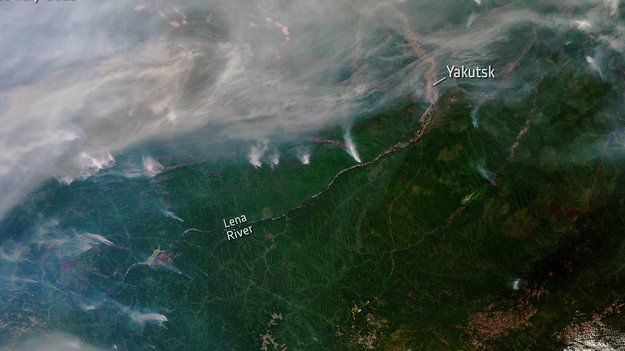
Copernicus Sentinel-3 captures multiple blazes surrounding Yakutsk, capital of the Sakha Republic, Russia
Lake Balaton
26.7.2019 10:05
Earth observation image of the week: the Copernicus Sentinel-2 mission takes us over Lake Balaton in western Hungary
Earth from Space
26.7.2019 10:05
This week's edition features a Copernicus Sentinel-2 image over Lake Balaton in Hungary
Too hot to handle
25.7.2019 16:06
Europe is facing another extreme heatwave, with many countries reaching record-breaking temperatures
Expanding our knowledge of Arctic Ocean bathymetry
24.7.2019 12:08
Our knowledge of the depth and shape of the Arctic Ocean floor – its bathymetry – is insufficient. Owing to year-round sea-ice coverage and the cost of research in this remote region, much of the Arctic Ocean’s bathymetry has remained a mystery, until now.
Second laser boosts Aeolus power
23.7.2019 14:40
ESA’s Aeolus satellite, which carries the world’s first space Doppler wind lidar, has been delivering high-quality global measurements of Earth’s wind since it was launched almost a year ago. However, part of the instrument, the laser transmitter, has been slowly losing energy. As a result, ESA decided to switch over to the instrument’s second laser – and the mission is now back on top form.
Monitoring Earth’s skin heat for crops and climate
22.7.2019 10:15
A bright red twin-engined aircraft, equipped with ultra-high-resolution thermal imaging technology has been scouring the agricultural heartlands of Europe this summer. It was no search and rescue exercise, but an initial step towards building a proposed new satellite system capable of recording the temperature of Earth’s skin in intricate detail.
Palm oil plantations
19.7.2019 10:05
Earth observation image of the week: Copernicus Sentinel-2 captures palm oil plantations in East Kalimantan - the Indonesian part of the island Borneo
Earth from Space
19.7.2019 10:05
In this edition, the Copernicus Sentinel-2 mission takes us over palm oil plantations on the island of Borneo
Replay: Earth Explorer 9
18.7.2019 10:15
Relive the User Consultation Meeting, which forms a critical part of the decision-making process as to whether FORUM or SKIM will be ESA’s next Earth Explorer
Apollo 11 launch pad
16.7.2019 13:07
Celebrating 50 years since Apollo 11 blasted off carrying the first humans that would walk on the Moon, Copernicus Sentinel-2 captures this historic launch site
Earth Explorer 9
15.7.2019 9:05
Will FORUM or SKIM be ESA’s next Earth Explorer mission? Follow the discussions live from the User Consultation Meeting on 16–17 July
Earth Explorer 9
15.7.2019 9:05
Will FORUM or SKIM be ESA’s next Earth Explorer mission? Follow the discussions live from the User Consultation Meeting on 16–17 July
Mount Fuji
12.7.2019 10:05
Earth observation image of the week: Copernicus Sentinel-2 takes us over the snow-capped Mount Fuji in Japan
Earth from Space
12.7.2019 10:05
In this week's edition, explore Mount Fuji, Japan's highest mountain, with Copernicus Sentinel-2
Using satellite information to help rebuild after a disaster
12.7.2019 9:10
ESA and the Asian Development Bank have joined forces to help the Indonesian government use satellite information to guide the redevelopment following the earthquake and tsunami that devastated the provincial capital of Palu and surroundings last year.
Modelling tides in the Arctic Ocean
11.7.2019 11:46
We are all aware of the ebb and flow of the tide every day, but understanding tidal flow is important for a range of maritime activities and environmental monitoring, such as search and rescue operations, shipping routes and coastal erosion. The Arctic Ocean tides are particularly difficult to understand, but a new tidal model produced using ESA satellite data may shed some light on what is happening in this remote area.
What’s happening to Greenland’s ice?
5.7.2019 17:30
Heatwave conditions catapulted Greenland into an early Arctic summer in June, prompting widespread melting across its icesheet surface, according to researchers at the Danish Meteorological Institute.
Irminger Sea ice swirl
5.7.2019 10:05
Earth observation image of the week: the Copernicus Sentinel-2 mission takes us over fragments of swirling sea ice off the coast of Greenland
Earth from Space
5.7.2019 10:05In this week's edition, explore a swirl of sea ice off the east coast of Greenland with Copernicus Sentinel-2
Rare lava lake
4.7.2019 10:21
The Copernicus Sentinel-2 mission captures a persistent lava lake on the remote Mount Michael volcano
Join ɸ-week
3.7.2019 16:09
Join ESA’s ɸ-week on 9–13 September to hear all about the latest trends in Earth observation and to explore the space business of tomorrow. Registration closes 25 July
German wildfire
2.7.2019 15:59
The Copernicus Sentinel-2 mission captures the blaze from a military training site in northern Germany
Surviving the shaker brings better weather forecasting a step closer
2.7.2019 8:15
With the first in the next generation of Meteosat satellites due to be launched in a couple of years, an important milestone has been passed, further paving the way for better weather forecasts – something on which we all rely.
Gulf of Taranto
28.6.2019 10:05
Earth observation image of the week: the Copernicus Sentinel-2 mission takes us over the Gulf of Taranto in Italy
Earth from Space
28.6.2019 10:05
In this week's edition, we take a look at the Gulf of Taranto, located in the inner heel of southern Italy
The heat is on
27.6.2019 17:10
Europe is in the grip of a heatwave. While weather forecasts provide the temperature of the air, Copernicus Sentinel-3 shows how hot the land surface is
The heat is on
27.6.2019 17:10
Europe is in the grip of a heatwave. While weather forecasts provide the temperature of the air, Copernicus Sentinel-3 shows how hot the land surface is
Fire red lines
27.6.2019 14:45
This Copernicus Sentinel-2 image not only features the Woodbury fire and burn scars in Arizona, but also the red lines that act as a fire retardant
Brunt on the brink
25.6.2019 14:00
The Brunt ice shelf in Antarctica is on the brink of spawning a huge iceberg. Scientists are using Earth observation satellites to keep a close eye on the cracks in the ice that will cause Brunt to break
Raikoke spits ash
24.6.2019 16:41
The Copernicus Sentinel-3 mission captured the unexpected ash plumes of the Raikoke volcano erupting
Lena River Delta
21.6.2019 10:05
Earth observation image of the week: Copernicus Sentinel-1 captures the largest delta in the Arctic
Earth from Space
21.6.2019 10:05
In this week's edition, Copernicus Sentinel-1 takes us over the Lena River Delta in Russia
Connecting the dots: nitrogen dioxide over Siberian pipelines
20.6.2019 11:10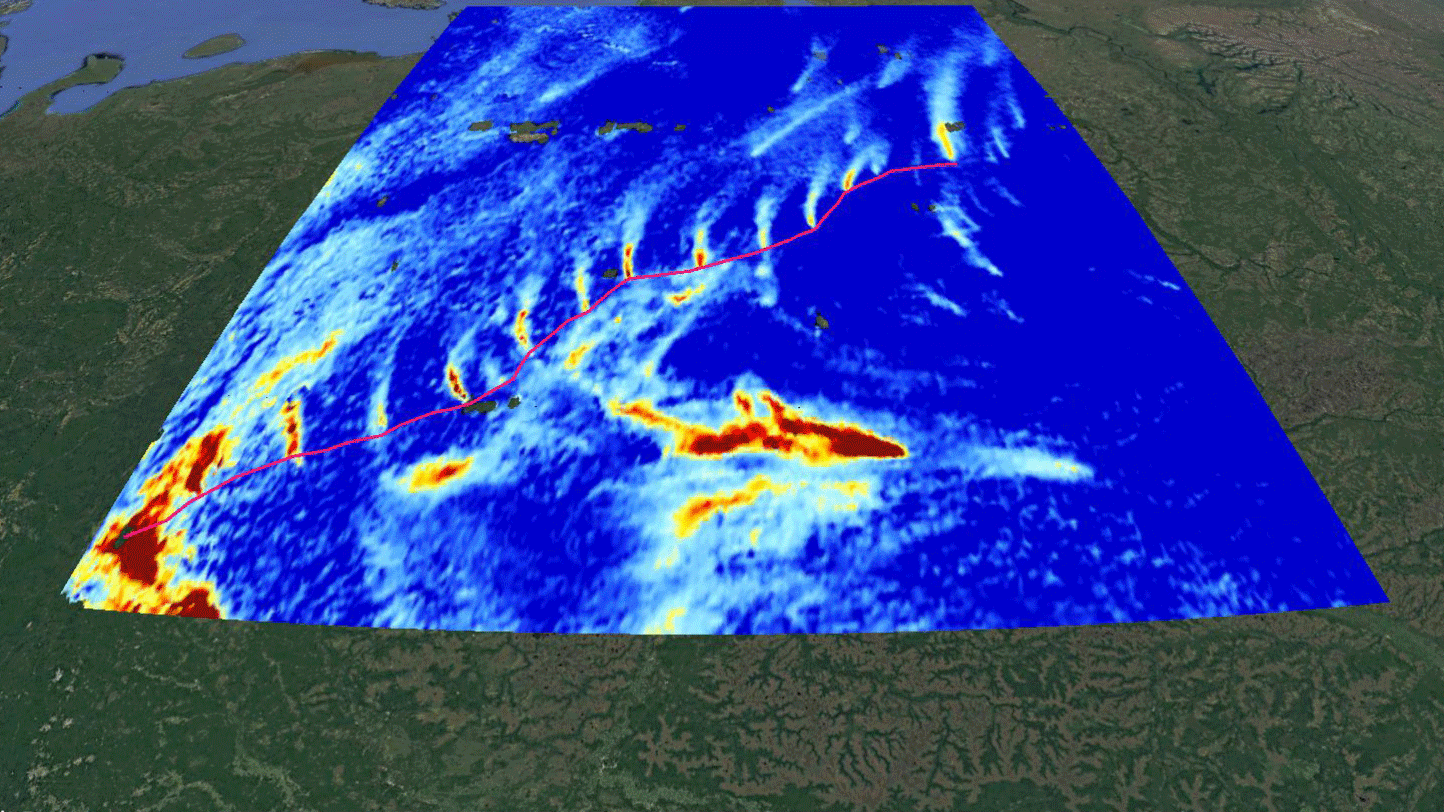
New maps that use information from the Copernicus Sentinel-5P satellite reveal emissions of nitrogen dioxide along a Siberian natural gas pipeline that connects the Urengoy gas field – the second-largest gas field in the world – with Europe.
Desert greenery
17.6.2019 16:41
Marking World Day to Combat Desertification and Drought, the Copernicus Sentinel-2 mission takes us over west Africa
East Bali
14.6.2019 10:05
Earth observation image of the week: the Copernicus Sentinel-2 mission takes us over east Bali in Indonesia
Earth from Space
14.6.2019 10:05
In this week's edition, we explore part of the island of Bali in Indonesia
Mapping our global human footprint
12.6.2019 16:00
The number of people flocking to cities in search of employment and better prospects is growing at an unprecedented rate. By 2050, the global population is estimated to reach nine billion, 70% of which will be living in urban areas. The World Settlement Footprint 2015 (WSF-2015) is the first map, using mass collections of radar and optical satellite imagery, to provide a global overview of the world’s human settlements.
SMOS joins forces with top weather forecasting system
12.6.2019 11:20
As of yesterday, 11 June 2019, measurements from ESA’s SMOS mission are being fully integrated into ECMWF’s forecasting system, allowing for a more accurate description of water content in soil.
Antarctic glaciers named after satellites
7.6.2019 10:30
Dramatic changes in the shape of the Antarctic ice sheet have become emblematic of the climate crisis. And, in deference to the critical role that satellites play in measuring and monitoring Antarctic glaciology, seven areas of fast-flowing ice on the Antarctic Peninsula have been named after Earth observation satellites.
Lake Valencia
7.6.2019 10:05
Earth observation image of the week: Copernicus Sentinel-2 takes us over Lake Valencia in Venezuela
Earth from Space
7.6.2019 10:05
In this week's edition, explore Lake Valencia in Venezuela with Copernicus Sentinel-2
MetOp Second Generation
6.6.2019 13:26
The structural and thermal model of Europe's coming generation of polar meteorology satellites has arrived at ESA's technical heart for a full-scale test campaign
Snow hits Australia
5.6.2019 15:34
Parts of the Southern Tablelands on Australia’s east coast have been hit by unexpected snow
RACE
4.6.2019 16:56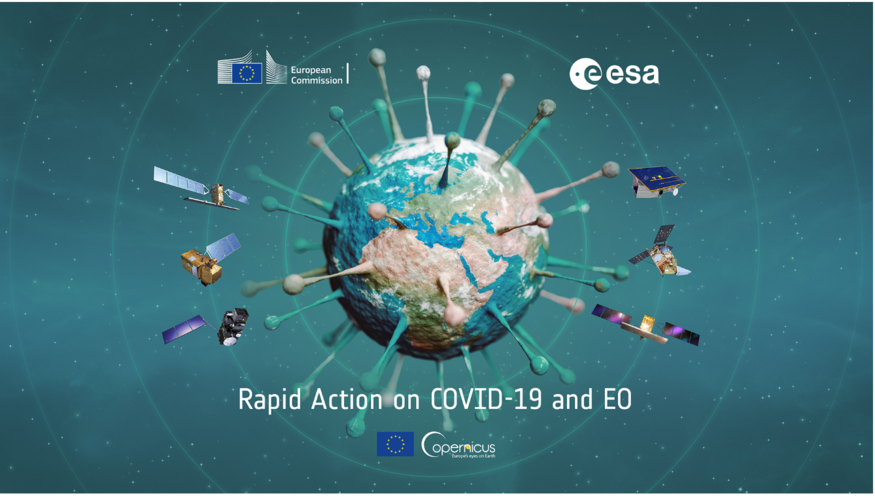
Rapid action on coronavirus and EO
Access latest information on the impacts of COVID-19
Space App Camp
3.6.2019 10:25
Developers are invited to apply for the September 2019 Space App Camp at ESA’s establishment in Frascati, Italy. Applications will be accepted until 15 July
El Salvador
31.5.2019 10:05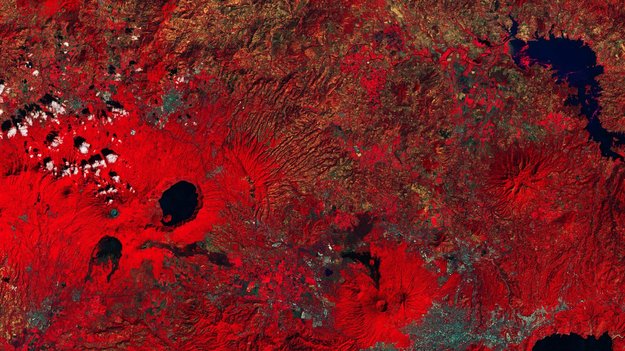
Earth observation image of the week: the Copernicus Sentinel-2 mission takes us over the mountainous terrain of El Salvador
Earth from Space
31.5.2019 10:05
In this edition, Copernicus Sentinel-2 takes us over El Salvador, the smallest and most densely populated country in Central America
Snow grain size – it matters
29.5.2019 18:20
Most of us probably wouldn’t think of describing snow in terms of its grain size. However, grain size is fundamental to the amount of sunlight that snow reflects back into space – its albedo. With both snow and albedo part of the climate system, scientists are applying a novel analytical theory to Copernicus Sentinel-3 data and shedding new light on Greenland’s changing albedo.
TRUTHS: a new potential ESA Earth Watch mission
29.5.2019 13:00
With ESA’s Space19+ Ministerial Council meeting set for November, a new satellite mission called TRUTHS will be added to the list of missions to be financed in the Earth Observation Earth Watch programme.
Western Pakistan
24.5.2019 10:05
Earth observation image of the week: the Copernicus Sentinel-2 mission takes us over western Pakistan and an important wetland area
Earth from Space
24.5.2019 10:05
In this week's edition, explore part of western Pakistan with Copernicus Sentinel-2
Open Days
21.5.2019 16:05
Schoolchildren had hands-on experience with Earth observation at the Living Planet Symposium last week
Vega to take Spain’s SEOSAT–Ingenio into orbit
20.5.2019 17:45
ESA and Arianespace have signed a contract that secure the SEOSAT–Ingenio Earth observation satellite’s ride into orbit next year on a Vega rocket from Europe’s Spaceport in French Guiana.
Living Planet highlights
17.5.2019 16:00
As the biggest Earth observation conference in the world draws to a close, we take a look back on some of the week’s highlights
Back to the future
17.5.2019 14:00
ESA’s Josef Aschbacher reflects on the highlights of this week’s Living Planet Symposium and discusses taking Earth observation into the future
Satellites yield insight into not so permanent permafrost
17.5.2019 13:59
Ice is without doubt one of the first casualties of climate change, but the effects of our warming world are not only limited to ice melting on Earth’s surface. Ground that has been frozen for thousands of years is also thawing, adding to the climate crisis and causing immediate problems for local communities.
Po Valley
17.5.2019 10:05
Earth observation image of the week: Copernicus Sentinel-2 takes us over the Po Valley in northern Italy
Earth from Space
17.5.2019 10:05
In this week's edition from the Living Planet Symposium in Milan, we feature a Copernicus Sentinel-2 image of the Po Valley
A quarter of glacier ice in West Antarctica is now unstable
16.5.2019 20:30
By combining 25 years of ESA satellite data, scientists have discovered that warming ocean waters have caused the ice to thin so rapidly that 24% of the glacier ice in West Antarctica is now affected.
Take a deep breath
16.5.2019 13:40
With air pollution a global concern, satellites provide vital information about air quality to help understand how to keep our planet breathable
The air we breathe
16.5.2019 13:05
Air pollution is a global environmental health problem, especially for those living in urban areas. Not only does it negatively impact our ecosystems, it considerably affects our health. According to the World Health Organization (WHO), around 8 million premature deaths per year are linked to air pollution, more than double of previous estimates.
Where science meets art
16.5.2019 12:30
New exhibition ‘Fragility and Beauty – taking the pulse of our planet from space’ opens in Milan, Italy
World Space Alliance kicks off
16.5.2019 10:50
While scientists and data users continue to discuss the latest findings about our changing world and the space technologies that are needed to learn more, this week’s Living Planet Symposium has also been the forum to forge and strengthen alliances. And, today sees the start of a two-year pilot for the ESA–SAP World Space Alliance.
Monitoring Earth’s shifting land
15.5.2019 17:00
The monitoring of land subsidence is of vital importance for low-lying countries, but also areas which are prone to peculiar ground instability.
3D Earth in the making
15.5.2019 15:00
A thorough understanding of the ‘solid Earth’ system is essential for deciphering the links between processes occurring deep inside Earth and those occurring nearer the surface that lead to seismic activity such as earthquakes and volcanic eruptions, the rise of mountains and the location of underground natural resources. Thanks to gravity and magnetic data from satellites along with seismology, scientists are on the way to modelling inner Earth in 3D.
Water cycle wrapped
15.5.2019 12:00
As our climate changes, the availability of freshwater is a growing issue for many people around the world. Understanding the water cycle and how the climate and human usage is causing shifts in natural cycling processes is vital to safeguarding supplies. While numerous satellites measure individual components of the water cycle, it has never been described as a whole over a particular region – until now.
The global thaw
15.5.2019 12:00
ESA’s satellites observing Earth’s cryosphere provide key information to understand and respond to global thawing
Tug-of-war drives magnetic north sprint
15.5.2019 9:55
As far as we know, Earth’s magnetic north has always wandered, but it has recently gained new momentum and is making a dash towards Siberia at a pace not seen before. While this has some practical implications, scientists believe that this sprint is being caused by tussling magnetic blobs deep below our feet.
Mapping salty waters
14.5.2019 15:45
The length and precision with which climate scientists can track the salinity, or saltiness, of the oceans is set to improve dramatically according to researchers working as part of ESA’s Climate Change Initiative.
New potential for tracking severe storms
14.5.2019 13:45
Even just within the last couple of months, Cyclones Fani, Idai and Kenneth have brought devastation to millions. With the frequency and severity of extreme weather like this expected to increase against the backdrop of climate change, it is more important than ever to forecast and track events accurately. And, an ESA satellite is helping with the task in hand.
Shaped by ice
14.5.2019 12:35
A nifty way of processing data from ESA’s CryoSat mission yields a high-resolution view of Antarctica in 3D
Jakobshavn Isbrae Glacier bucks the trend
14.5.2019 10:55
Our planet works in mysterious ways. We are all used to hearing about the world’s ice being the first casualty of climate change and, indeed, it is declining fast. However, recent findings show that one glacier is not conforming to the norm – it’s actually been flowing more slowly and getting thicker.
Joining forces on Earth science to benefit society
13.5.2019 16:20
With human activity leaving its indelible mark on the landscape and affecting the climate, our natural world is changing faster than at any other time in history. Science is fundamental to understanding environmental change so that these huge challenges can be tackled. To ensure a more efficient approach on Earth-system science and to bring direct benefits to society, ESA and the European Commission are working to join forces.
Spotlight on the pulse of our planet
13.5.2019 14:48
Satellites deliver crucial information to help solve what is our biggest global problem: climate change. As well as taking the pulse of our planet, satellite data are used in a myriad of daily applications, and are also used increasingly in business. It’s no surprise then that over 4 000 people have flocked to Milan to hear the latest scientific findings on Earth’s natural processes and global change, and to learn about the wealth of new opportunities that Earth observation has to offer.
Surpassing expectations
13.5.2019 14:15
Learn how each Earth Explorer satellite continues to surpass expectations by revealing new insights into our planet
Living Planet replay
13.5.2019 12:40
The biggest Earth observation conference in the world got underway today in Milan, Italy. Watch the replay of the opening session
Living Planet replay
13.5.2019 12:40
The biggest Earth observation conference in the world got underway today in Milan, Italy. Watch the replay of the opening session
Living Planet
10.5.2019 15:21
Follow the top stories from ESA's Living Planet Symposium where thousands are gathered to hear the latest results on taking the pulse of our planet from space
Milan
10.5.2019 10:05
Earth observation image of the week: Copernicus Sentinel-2 takes us over the fast-paced metropolis of Milan, Italy
Earth from Space
10.5.2019 10:05
In this week's edition, discover the city of Milan in Italy with Copernicus Sentinel-2
Living Planet live
9.5.2019 17:00
As thousands of scientists gather in Italy for the biggest Earth observation conference in the world, follow the opening session live. Streaming starts on 13 May at 07:00 GMT (09:00 CEST)
Space for climate
9.5.2019 10:53
Learn how ESA's Climate Change Initiative helps us understand climate change from space
Art and climate
7.5.2019 17:05
ESA’s visiting artist, Shane Sutton, explains the background to his Climate from Space street art exhibition to be unveiled at the Living Planet Symposium



